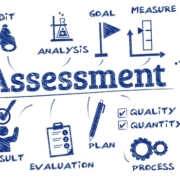Burnout, lavoro emozionale: Limiti e Bibliografia
L’obiettivo iniziale di questa ricerca era quello di analizzare il ruolo del lavoro emozionale in ambito sanitario, in particolare l’attività svolta dagli infermieri, che la letteratura ha riconosciuto come professione più sottoposta a questo fenomeno (Bolton, 2001).
Tuttavia la ridotta numerosità dei partecipanti alla ricerca non ha consentito di indagare in maniera approfondita tutte le dimensioni del lavoro emozionale, pertanto, con l’obiettivo di contribuire ad un incremento di studi quantitativi relativi alle considerazioni emerse da indagini qualitative, è stata analizzata la frequenza e l’intensità delle manifestazioni emotive tra uomini e donne.
Un ulteriore limite è dovuto all’impossibilità di effettuare un confronto tra i settori di impiego degli infermieri coinvolti nella ricerca, in quanto il campione non era abbastanza ampio per permettere dei confronti tra unità operative differenti.
Sempre per lo stesso motivo si è scelto di indagare il ruolo della dimensione surface acting, intesa come una modalità di regolazione della dissonanza emotiva, che la letteratura ha riconosciuto come maggiormente associata all’insorgenza della sindrome di burnout.
Le percentuali di varianza spiegata non sono molto alte, tuttavia sono risultate significative e permettono quindi di ipotizzare future ricerche che seguano la traccia qui impostata, consentendo, tramite l’impiego di campioni più ampi, di meglio studiare gli effetti qui riscontrati.
RIFERIMENTI BIBLIOGRAFICI
- Abraham, R. (1998). Emotional dissonance in organizations: Antecedents, consequences, and moderators. Genetic, Social, and General Psychology Monographs, 124(2), 229-246.
- Agervold, M. & Mikkelsen, E.G. (2004). Relationship between bullying, psychosocial work environment and individual stress reactions. Work & Stress, 18, 336-351.
- Ashforth, B. E. & Humphrey, R. H. (1993). Emotional labor in service roles: The influence of identity. Academy of Management Review, 18, 249–280.
- Bakker, A. B. & Heuven, E. M. (2003). Emotional dissonance and burnout among cabin attendants. European Journal of Work and Organizational Psychology, 12, 81–100.
- Bakker, A. B. & Schaufeli, W. B. (2000). Burnout contagion processes among teachers. Journal of Applied Social Psychology, 30, 2289-2308.
- Bakker, A.B. & Demeruti, E. (2009). The crossover of work engagement between working couples: A closer look at the role of empathy. Journal of Managerial Psychology 24 (3), 220-236
- Bakker, A.B. & Heuven, E. (2006). Emotional Dissonance, Burnout, and In-Role Performance Among Nurses and Police Officers. International Journal of Stress Management, 13( 4), 423–440.
- Bakker, A.B. & Westaman, M. (2008). Crossover of Burnout among Health Care Professionals. In Handbook of Stress and Burnout in Health Care. Jonathon R. B. Halbesleben.
- Bakker, A.B., Le Blanc, P.M. & Schaufeli, W.B. (2005). Burnout contagion among nurses who work at intensive care units. Journal of Advanced Nursing, 51, 276-287.
- Bakker, A.B., Westman, M. & Schaufeli, W.B. (2007). Crossover of burnout: An experimental design. European Journal of Work and Organizational Psychology, 16, 220-239.
- Blanc, P.M., Bakker, A. B., Peeters M. C. W., Heesch, N. C. A. & Schaufeli, W.B. (2001). Emotional job demands and burnout among oncology care providers. Anxiety, Stress & Coping, 14(3), 243-263.
- Bolton, S.C. (2001). Changing faces: nurses as emotional jugglers. Sociology of Health and Illness, 23, 85–100.
- Bonazzi, G. (2006). Come studiare le organizzazioni. Bologna: Il Mulino.
- Borgogni, L & Consiglio, C. (2005). Job burnout: evoluzione di un costrutto. Giornale italiano di psicologia,. 32(1).
- Brief, A. P. & Weiss, H. M. (2002). Organization behavior: Affect in the workplace. Annual Review of Psychology, 53, 279–307.
- Brotheridge, C. M. & Grandey, A. A. (2002). Emotional labor and burnout: Comparing two perspectives of “people work”. Journal of Vocational Behavior, 60, 17–39.
- Brotheridge, C.M. & Lee, R.T. (2003). Development and validation of the Emotional Labour Scale. Journal of occupational and Organizational Psychology, 76 (3), 365-379
- Cronbach, L. J. (1951). Coefficient alpha and the internal structure of tests. Psychometrika, 16, 97-334.
- De Jonge, J.,. Mulder, M. Nijhuis F. (1999) The incorporation of different demand concepts in the job demand-control model: effects on health care professionals. Social Science & Medicine 48, 1149-1160
- Demerouti, E., Bakker, A. B., Nachreiner, F., & Schaufeli, W. B. (2001). The job demands resources model of burnout. Journal of Applied Psychology, 86, 499–512.
- Depolo, M. (2007). Psicologia delle organizzazioni. Bologna: Il Mulino.
- Grandey, A. A. (2000). Emotional regulation in the workplace: A new way to conceptualize emotional labor. Journal of Occupational Health Psychology, 5, 95–110.
- Gray B., (2009). The emotional labour of nursing – Defining and managing emotions in nursing work. Nurse Education Today 29, 168–175
- Gray-Toft, P. e Anderson, J. (1981). The Nursing Stress Scale: Development of an instrument. Journal of Behavioral Assessment, 3, 11-23.
- Guglielmi, D., Paplomatas A., Simbula S. e Depolo M. (2009). Prevenzione dello stress lavoro-correlato: Validazione di uno strumento per la valutazione dei rischi psicosociali nella scuola (In valutazione).
- Guglielmi, D., Simbula,S., Depolo, M. & Violante, F. (2010) La rilevazione dei fattori di rischio psicosociale alla luce del job demands- resources model. Risorsa Uomo 16 (1), 40-54.
- Henderson, A. (2001). Emotional labor and nursing: an under-appreciated aspect of caring work. Nursing Inquiry,8 (2) 130–138
- Hochschild, A. R. (1983). The managed heart: Commercialization of human feeling. Berkeley:University of California Press.
- Hoffman, L. W. (1972). Early childhood experiences and women’s achievement motives. Journal of Social Issues, 28, 129-155.
- Johnson, M. H & Spector, P. (2007). Service With a Smile: Do Emotional Intelligence, Gender, and Autonomy Moderate the Emotional Labor Process? Journal of Occupational Health Psychology 12(4), 319–333
- Karasek ,R. A. (1979). Job demands, job decision latitude, and mental strain: Implications for job redesign. Administrative Science Quarterly, 24, 285–308
- Mann, S.& Cowburn, J. (2005). Emotional labour and stress within mental health nursing. Journal of Psychiatric and Mental Health Nursing12, 154–162
- Martinez-Indigo, D., Totterdell, P., Alcover, C. M., & Holman, D. (2007). Emotional labour and emotional exhaustion: interpersonal and intrapersonal mechanisms. Work and Stress, 21, 30-47.
- Maslach C., & Jackson S.E., (1981) MBI: Maslach Burnout Inventory. Palo Alto, CA: Consulting Psychologist Press. Traduzione italiana a cura di Sirigatti S., & Stefanile S., (1993) MBI: Maslach Burnout Inventory. Adattamento italiano. Organizzazioni Speciali, Firenze.
- Morris, J. A., & Feldman, D. C. (1996). The dimensions, antecedents, and consequences of emotional labor. Academy of Management Review, 21, 986–1010.
- Rafaeli, A. (1989). When clerks meet customers: A test of variables related to emotional expression on the job. Journal of Applied Psychology, 74, 385-393.
- Sarchielli, G., (2003). Psicologia del lavoro. Bologna: Il Mulino.
- Sarchielli,G., Toderi, S., Gaetani, I. & Carvalho, C. (2009) La dissonanza emotiva: un ulteriore fattore di stress lavorativo?. Risorsa uomo, 15 (4), 375-386
- Smith ,P. & Gray, D. (2000). The emotional labour of nursing: how student and qualified nurses learn to care. London: South Bank University.
- Smith, P. (1992). The emotional labour of nursing . London: Macmillan.
- Vegchel N. , De Jonge J., Soderfeldt M., Dormann C. & Schaufeli W., (2004), Quantitative Versus Emotional Demands Among Swedish Human Service Employees: Moderating Effects of Job Control and Social Support. International Journal of Stress Management, 11 (4) 21–40
- Wanous, J. P., Reichers, A. E. e Hudy, M. J. (1997). Overall Job Satisfaction: How good are single-item measures? Journal of Applied Psychology, 82, 247-252.
- Zapf, D. (2002). Emotion work and psychological well-being. A review of the literature and some conceptual considerations. Human Resource Management Review, 12, 237-268.
- Zapf, D., & Holz, M. (2006). On the positive and negative effects of emotion work in organizations. European Journal of Work and Organizational Psychology, 15, 1-28
- Zapf, D., Seifert, C., Schmutte, B., Mertini, H., & Holz, M. (2001). Emotion work and job stressors and their effects on burnout. Psychology and Health, 16, 527-545.





